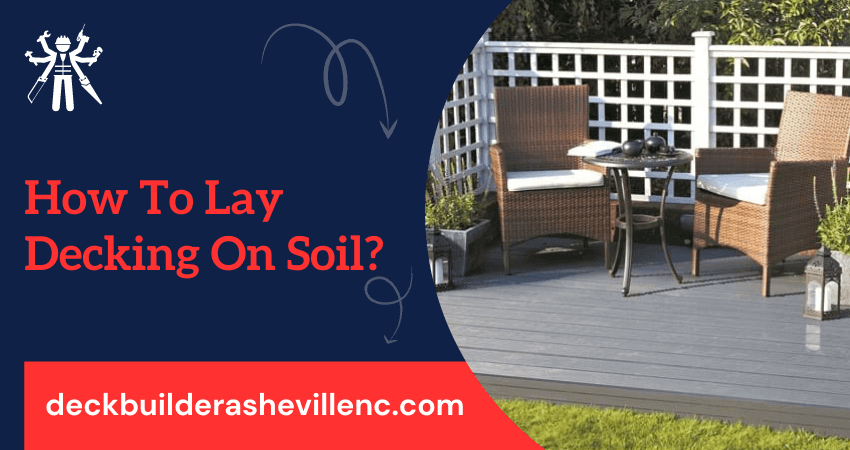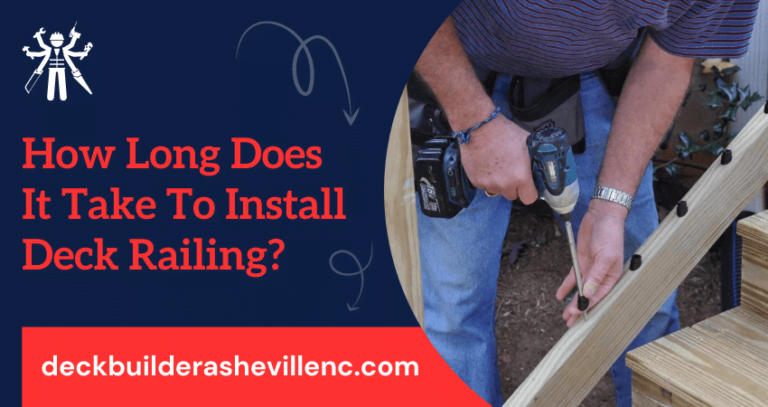How To Lay Decking On Soil?
Decking is a great addition to any outdoor space, providing an attractive and functional surface for relaxation, entertainment and recreation. However, laying decking on soil can be a challenging task that requires careful planning and preparation.
Whether you are building a deck for the first time or looking to replace an existing one, understanding the steps involved in laying decking on soil can help you achieve a successful and long-lasting result.
In this guide, we will provide you with a step wise process on how to lay decking on soil, including the tools and materials needed, tips on selecting the right type of decking and the key factors to consider when preparing the soil for installation.
With the right tools, materials and knowledge, you can create a beautiful and functional outdoor deck that will enhance the value of your home. So read on for more!
How to lay decking on soil?
1) Preparing the Site/Soil
Here are some steps to help you properly prepare the site for your decking project:
- Choose the location: When selecting a location for your deck, consider factors like the amount of sunlight, shade and wind that the area receives. Choose a location that is suitable for your intended use and complements the overall design of your outdoor space.
- Clear the site: Clear any grass, weeds or debris from the area where you plan to build your deck. Use a shovel or sod cutter to remove any vegetation or plants and dispose of them properly. Ensure the site is clear of any underground utilities like gas lines, electrical wires or water pipes.
- Level the ground: Use a shovel and a level to remove any high spots and fill any low spots in the soil. The ground should be as level as possible to ensure your deck is stable and safe. A good practice is to create a slight slope of 1/4 inch per foot away from the house for proper water drainage.
- Install a weed barrier: A weed barrier is a layer of material placed over the soil to prevent weed growth. It is recommended to install a weed barrier before laying the decking to prevent weeds from growing between the boards. Use a high-quality landscape fabric or geotextile material for the best results. Cut the fabric to fit the size of your deck and secure it in place with landscape fabric staples.
Building the Deck
To build the deck you need to follow these steps:
1) Choose the type of decking material
There are several types of decking materials to choose from, including wood, composite and PVC. Consider factors like durability, maintenance requirements, cost and aesthetics when selecting the material for your deck.
2) Determine the deck size and layout
Determine the size and layout of your deck based on your intended use and available space. Use a tape measure to mark the perimeter of the deck and consider features like built-in seating, planters or hot tubs in your design.
3) Build the frame
Construct a frame for your deck using pressure-treated lumber or other suitable material. Use a level to ensure that the frame is level and square and secure it to the ground using concrete footings or deck blocks.
4) Install the deck boards
Lay the deck boards on top of the frame, starting at the outer edge and working inward. Use a chalk line to ensure that the boards are straight and leave a small gap between each board for expansion and contraction. Attach the boards to the frame using deck screws, making sure to sink them below the surface of the wood.
5) Add railings and stairs
Install railings around the perimeter of your deck to provide safety and support. Choose a railing design that complements the style of your deck and meets local building codes. Add stairs to provide easy access to and from the deck. Stairs should be sturdy, safe and constructed using the same materials as the deck.
Tools that use for lay decking on soil
When laying decking on soil, you will need several basic tools. These include:
- Shovel: You will need a shovel to dig out trenches, according to the size and shape of your deck. This will help level the surface and also ensure proper drainage.
- Stakes: You will need stakes to secure the decking boards in place these are usually made of metal or wood and are available in various lengths.
- Hammer: You will need a hammer to help secure the stakes into the ground.
- Level: A level is essential to ensure that the surface of your deck is even, which will help prevent it from sinking into the ground.
- Deck screws: Deck screws are used to secure the decking boards in place and provide additional support for the structure.
- Pressure washer: A pressure washer can be used to clean the soil around your deck, ensuring that it is free from dirt and debris. This will help to reduce the chances of rot or decay.
- Caulk gun: A caulk gun can be used to seal any gaps between the decking boards, ensuring that water does not penetrate the structure and cause damage.
- Tape measure: A tape measure will help you accurately assess the size and layout of your deck.
Tips for Successful lay deck on soil
- Choose a high-quality decking material that is designed for use on soil. Consider utilizing pressure-treated lumber, composite materials or another type of durable material that can withstand long-term exposure to moisture and other elements.
- Install a plastic edging around the perimeter of the decking area to help keep soil and mulch from spilling out onto your deck surface. This will also help create a distinct barrier between the soil and the deck structure, making it easier to clean up any dirt or debris that accumulates during use.
- Use the appropriate tools and equipment when building your deck, including saws, drills, hammers and safety equipment like gloves and goggles. Using the right tools for the job will make the process more efficient and ensure that your deck is built to the highest standards.
- Lay pavers or another form of hardscape material between the soil and your decking as a barrier against moisture and debris. This will also help protect the decking material from any dirt or mulch spilled onto it, which can cause staining and wear down the surface over time.
- Check your local building codes and regulations to ensure that your deck meets all requirements for safety and construction. Obtain any necessary permits and inspections and ensure that your deck is built to code. This will ensure that your deck is safe and legal and will prevent potential fines and penalties.
- Apply a layer of mulch around the perimeter of your decking to help keep the soil in place and reduce erosion. This will also add a bit of color to your decking design and help it blend in with the surrounding landscape.
- Keep your decking area free from debris and clutter to help ensure that it stays safe for use. Sweep away any leaves, dirt or other debris that accumulates on the surface to keep it looking clean and inviting.
By following these tips, you can ensure that your deck will last for years to come and be a safe and enjoyable place to relax and entertain.
FAQs – Laying Deck On Soil
How deep should I dig the soil for the decking?
The depth of the soil will depend on local building codes but it is generally recommended to dig at least 6-8 inches deep. If you are going to be installing a structure like stairs or benches, then you may need to dig deeper.
It is important to also consider the slope of your yard when determining how deep to dig. A gentle slope may require less depth than a steep one. Make sure to check with your local building codes for any additional requirements before beginning the project.
What is the best type of wood to use for the decking on soil?
When it comes to decking on soil, several types of wood can be used. However, the best type of wood for this application is cedar because it is naturally resistant to rot, decay and insects like termites.
Other types of wood that are suitable for decking on soil include pressure-treated pine, redwood and mahogany. All of these materials have their strengths and weaknesses but in general, cedar is the best choice as it will last longer with less maintenance.
Can I install a hot tub or other heavy items on a deck on soil?
It is possible to install a hot tub or other heavy items on a deck on soil but it should be done with care. If you plan to put something large and heavy on your soil-based deck, it’s best to consult a professional for advice.
You may need to take extra steps to reinforce the soil and support the item you are installing. This may include adding more foundation supports, using structural posts or beams or using concrete footings. Before installing a hot tub or other heavy items on your deck, make sure you know the weight capacity of your deck
Final Words
Laying decking on soil can be a straightforward and cost-effective way to create an outdoor living space. The key to success is proper preparation of the soil, selecting the right materials and using the correct construction techniques.
It is important to ensure that the soil is level and stable and that any weeds or grass are removed before starting. By following these steps and taking the necessary precautions, you can create a beautiful and functional outdoor space that will last for years to come.








